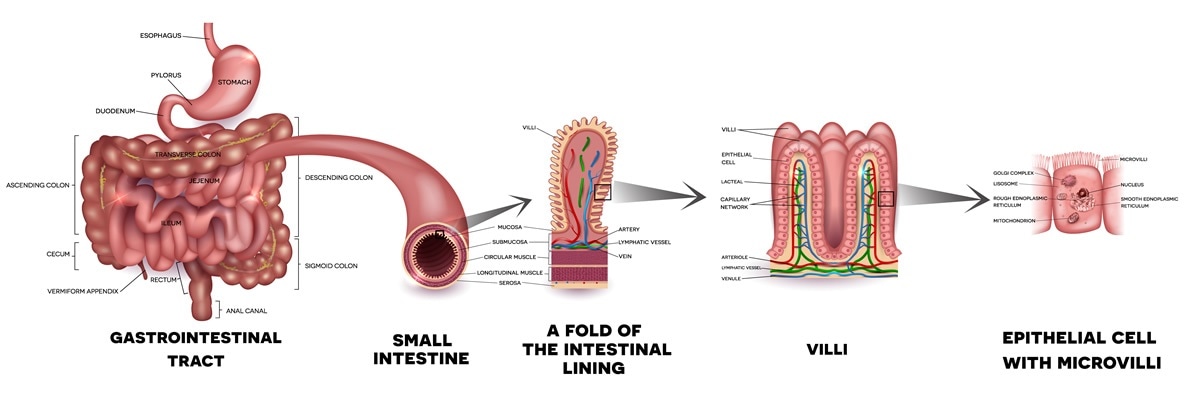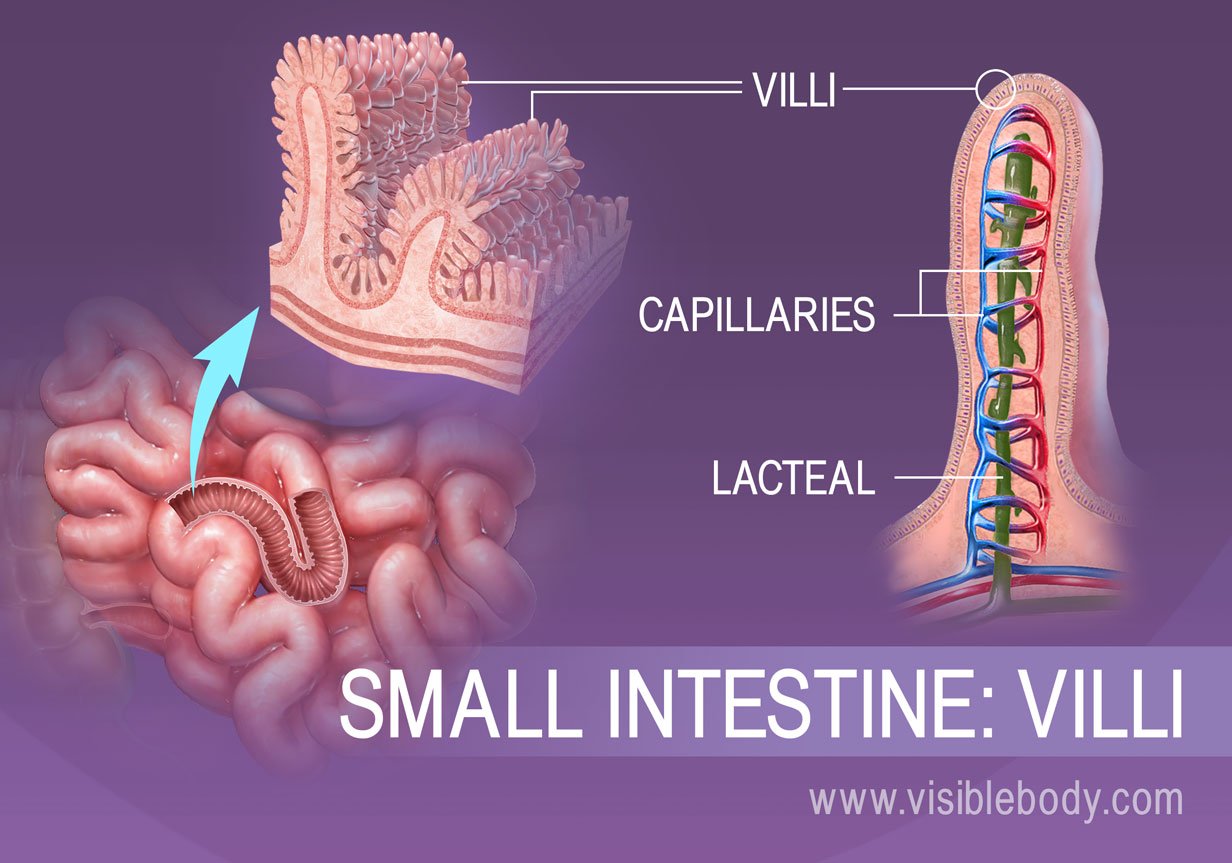
How Does the Small Intestine Absorb Nutrients from Digested Food?
The process of nutrient absorption in the human body is a marvel of complexity and efficiency. At the heart of this intricate system is the small intestine, a remarkable organ responsible for the absorption of essential nutrients from the digested food we consume. In this comprehensive article, we will explore the anatomy of the small intestine, the mechanisms by which it absorbs nutrients, and the vital role it plays in sustaining our health.
Anatomy of the Small Intestine
The small intestine is a long, tube-like organ located between the stomach and the large intestine. It measures approximately 20 feet in length in adults, making it the longest part of the digestive tract. This remarkable length is crucial for maximizing the surface area available for nutrient absorption.
The small intestine consists of three distinct regions:
- Duodenum: This is the first and shortest section, spanning about 10 inches. It receives partially digested food (chyme) from the stomach, bile from the liver, and digestive enzymes from the pancreas.
- Jejunum: The jejunum is the middle section, stretching for about 8 feet. It’s the primary site of nutrient absorption.
- Ileum: The ileum is the final segment, about 12 feet long, which connects to the large intestine. While some nutrient absorption occurs here, its primary role is to absorb remaining nutrients and vitamin B12.
The Role of Villi and Microvilli
The small intestine’s remarkable efficiency in absorbing nutrients can be attributed to its specialized structural features. The inner lining of the small intestine is covered in finger-like projections called villi, and each villus is covered in even smaller hair-like structures known as microvilli. Together, these structures create a vast surface area, significantly increasing the absorptive capacity of the small intestine.
Nutrient Absorption Mechanisms
Nutrient absorption in the small intestine involves a complex interplay of several mechanisms, each tailored to absorb specific types of nutrients:
1. Passive Diffusion:
Some small molecules, like water and lipid-soluble vitamins (A, D, E, and K), can passively diffuse across the cell membrane of the absorptive cells lining the small intestine. This process does not require energy.
2. Facilitated Diffusion:
Certain larger molecules, like fructose and some ions, require transporter proteins embedded in the cell membrane to facilitate their transport into the absorptive cells.
3. Active Transport:
Many nutrients, including glucose and amino acids, are absorbed through active transport, which necessitates the use of energy. Specific transporter proteins move these nutrients against their concentration gradients into the absorptive cells.
4. Endocytosis:
Large molecules like some proteins are absorbed through endocytosis. The absorptive cell engulfs the nutrient by forming a vesicle around it and then brings it into the cell.
Nutrient-Specific Absorption
Different nutrients are absorbed through distinct mechanisms and are transported to various parts of the body for use or storage:
- Carbohydrates: Carbohydrates are broken down into monosaccharides (e.g., glucose) and absorbed through active transport or facilitated diffusion.
- Proteins: Proteins are digested into amino acids, which are absorbed via active transport.
- Fats: Dietary fats are broken down into fatty acids and glycerol. They are then absorbed by forming micelles and diffusing into the absorptive cells.
- Vitamins and Minerals: Various vitamins and minerals are absorbed through passive or active transport mechanisms. The absorption of some minerals may be regulated to prevent overconsumption.
Conclusion
The small intestine is a critical player in the process of nutrient absorption, ensuring that the body receives the essential components needed for growth, energy production, and overall health. Its intricate structure, which includes villi and microvilli, maximizes surface area, while a variety of absorption mechanisms cater to the diverse nutrient needs of the body. This complex, finely tuned system exemplifies the remarkable efficiency of the human digestive system, highlighting the body’s ability to extract and utilize vital nutrients from the food we consume to sustain our lives.




